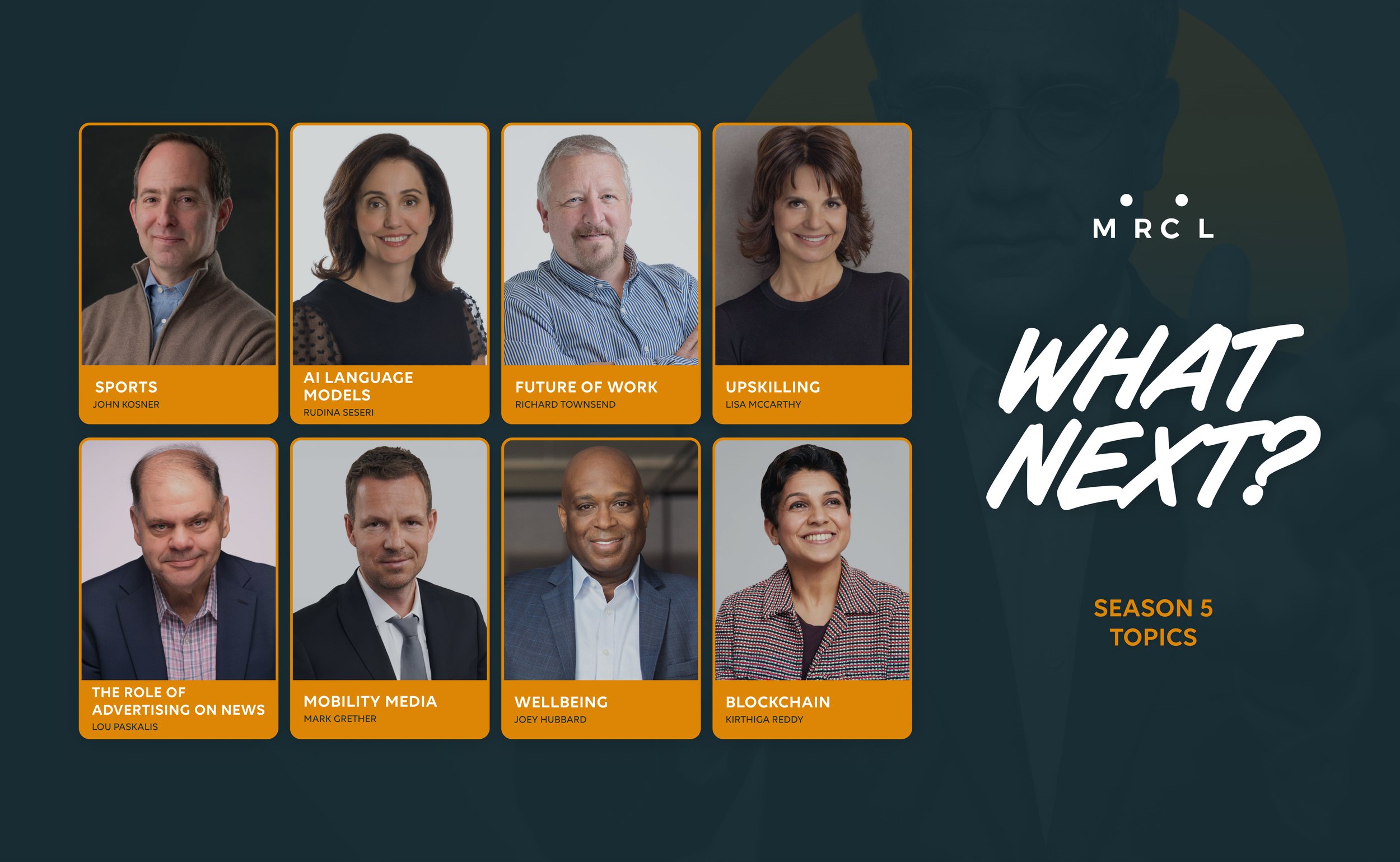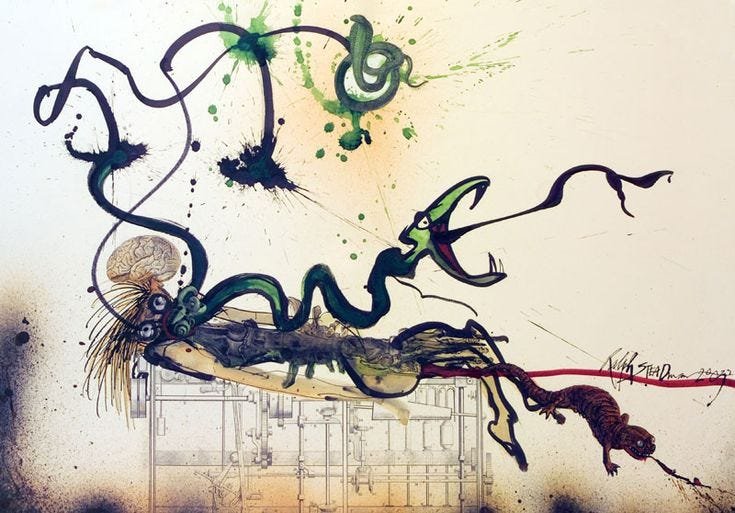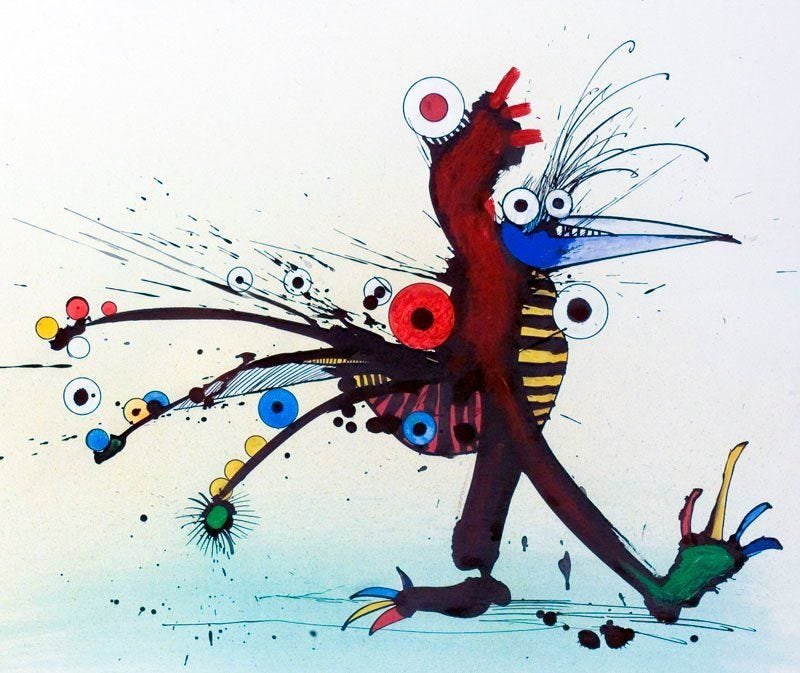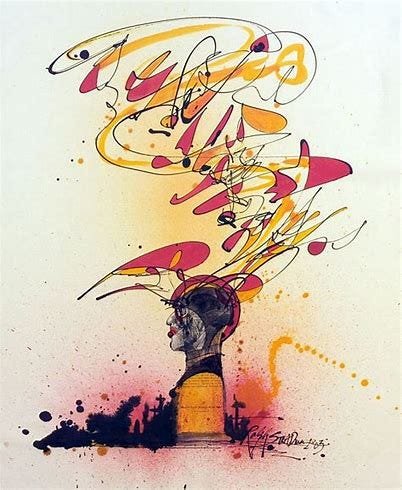Exercising Belief.
Photography by Sho Hoshino
In today’s changing world amidst chaos and conflict there is a break down in trust, an increase in polarization and a rise in rage.
We all have a list of bad actors, things that we oppose, ideas that we reject and views that we abhor.
It may be worth the while to also make a list of what we believe to be true.
Ideas or insights gleaned from experience, or from our elders and inspirational people or from our own experience that provide the wisdom to steer our lives by.
A focus on what we running towards and what keeps us running, rather than what we are running from or believe are running things down.
Here are a list of five beliefs to drive a life operating system:
Photography by Sho Hoshino
1. Life is how one deals with loss, connects with love and grows through learning.
Loss: Loss is central to the human experience in three ways:
First, is we often lose in our attempts to succeed. We lose promotions, jobs and opportunities. We lose money and valuable assets.
Many times, we also win.
Some people win a little and others win a lot.
But we all lose.
But these losses however daunting and disappointing are not the big ones.
The second set of losses are the losses we will face of loved ones and friends either because relationships end, or death comes.
And our final loss is that of ourselves.
Our health.
And then our lives.
Franz Kafka wrote that “the meaning of life is that it ends”
How we live amidst these losses defines a large part of life.
To learn to practice “personal resurrections” after setbacks and to endure and keep on growing and going.
Love: A big part of what makes life worth living despite the guarantee of loss is love.
Love of people, of work, of art, of culture, of craft and of things and hobbies.
It is in fact this love and attachment that is deeply intertwined with the feelings of loss
Love does not compute; and computers though they are getting increasingly advanced into deluding us that they love us since they ingest all our stories and then customize their reaction to be our “personalized” friends cannot love us.
In part that is because they cannot feel.
And therefore cannot feel loss.
And with love comes loss and love is an anti-dote to loss.
Learning: Today we have large language models that learn by ingesting, sorting, parsing, co-relating, re-combining and digesting all they can eat.
It is clearly a form of learning and the machines are getting “smarter”
Thus while machines may not know about love and loss they definitely can learn.
But do they feel joy as they learn?
Without the reality of loss or the feeling of love can they turn information into insight into wisdom?
Love, loss and learning are intertwined with each one feeding and influencing and resonating with each other.
Photography by Sho Hoshino
2. Success is being able to spend your time in the way that creates joy.
Success is sought by all but what is being sought?
For some it is making a mark in their field or leaving some enduring work. For others it is seeking financial wealth or creating and nurturing a family. For some it is helping others.
For most people success also means a measure of happiness.
In the end if time is all that one has than success probably has to do with how one uses time.
Ann Dillard wrote that “the way we spend our days is the way we spend our lives”
When one is financially constrained one’s mind and time are colonized by making ends meet.
When one is physically in pain or suffering from ill health it is often hard to be happy.
So, if happiness is the ability to not spend time thinking all the time about ones financial or physical situation it means a certain amount of financial and physical well-being is key to being happy and possibly successful.
Sooner or later once these basics of not having to worry about the next rent check or waking up the next day are overcome the words and emotions that link the happy and successful are those of purpose, meaning, connection, flow, recognition and growth.
And these can change over time and are different for different people.
But it all comes down to having the freedom to allocate one’s time the way one does.
How can we spend your time, that increasingly gets to a place where we spend more of it in ways that give us joy?
Photography by Sho Hoshino
3. Do not live in other people’s minds.
It has been written that “comparison is the thief of joy” but so is living one’s life to score points in somebody’s else’s scoreboard of what success is.
The rise in mental anguish among teenagers is in part how social media has accentuated the need to look good in somebody else’s eyes.
But it is not just teenagers who live in other people’s minds versus theirs.
Caring what other people think is human and often learning and getting feedback on how one can improve is key to success so not living in other people’s minds does not mean not listening to or caring what other people say or think.
It means stopping using their metrics and their rulers of success to rule the way we live our life.
If nobody was looking and we do not have to preen and strut would we live differently?
Living in other peoples minds is like giving somebody else a remote control to direct your life.
Photography by Sho Hoshino
4. There is nothing good or bad but thinking makes it so.
While one may not agree with Hamlets’ statement that “there is nothing good or bad but thinking makes it so”, our mindsets matter a lot in how we perceive life, how we are perceived and the degree of success we may have in our varied endeavors.
In rapidly changing and chaotic times an agile mindset can be critical to success.
How we react to a thing or event is often what determines the impact of the thing or the event.
While there are many personal trainers to help sculpt our bodies into somewhat supple forms, there is a scarcity in those who can show us how to exercise our minds to be as flexible as they need to be.
Mindsets matter.
Growth mindsets. Learning mindsets. Optimistic mindsets. Realistic mindsets.
Optimism matters.
In the novel “Gravity’s Rainbow” by Thomas Pynchon a character is described as one whose “mood collapsed the room”.
While misery may love company, nobody likes being in the company of miserable people. Optimism is not just an essential component of innovators but a trait that you must have if you wish to inspire folks to follow you. “Woe is me, doomed are us” works for a few drinks in a bar, but at the workplace it saps energy, hurts culture and is just a plain downer. Pessimism is something we all wallow in, but it fails to show the way out.
A way to get optimistic is to forget all the legacy nonsense we may have to grapple with and ask that if we had a fresh sheet of paper and no constraints except those of the law, science and the need to become/remain economically viable what would we do?
Can we reframe, rethink and reinvent?
Every day is a new career beginning.
Tomorrow is where we will spend the rest of our lives.
Photography by Sho Hoshino
5. Practice Compound Improvement.
The single most powerful concept in finance is that of compounding.
Compounding interest and compounding returns can over time create wealth or lead one to bankruptcy depending on whether you owe or own capital.
In a world of change we all may want to consider another way compounding can help us grow in changing times and drive mental, emotional, and even financial wealth which is compounding improvement.
There is so much we cannot control in a world driven by global, demographic, social and technological change but instead of being buffeted about helplessly in a sea of chaos maybe we can try to control and build our ourselves to be better.
Three learnings about compound improvement.
a) Discipline equals Freedom: This is the title of a book by Jocko Willink, a Navy Seal. Basically, if we want to get a grip on the world get a grip on ourselves. Things are more up to us than we think if we are willing to work at it.
b) Never graduate from school: The world is changing so fast that many of our skills and expertise and mindsets need continuous upgrading. While many of us set aside time to exercise to maintain our physical operating system we need to also feed and exercise our minds. The power of this habit is that at the end of a year one will have spent 365 hours learning new things by just doing one hour a day. The day we start dying is the day we stop learning.
c) Deliberate Practice: Anders Ericcson wrote a book called “Peak” which is the best study of deliberate practice. Deliberate practice involves three components
1) immediate feedback, 2) clear goals and 3) a focus on technique. According to his research, the lack of deliberate practice explained why so many people reach only basic proficiency at something, whether it be a sport, pastime, or profession, without ever attaining elite status.
To become great become great at something. It may be art, business, fishing, caring for somebody. All of us have some great expertise and things we can give the world.
We just need to architect, hone and sculpt with deliberate practice to unleash our skill on the world just as Michelangelo revealed “David” by removing all the marble that was not him.
Try an exercise of listing a few beliefs that drive your life or ask others to do so.
It is likely to help one grow and connect better with others.
Small Things.
Visual Art by Susan Swinand
Every six months for over three decades I receive an updated insurance card from State Farm.
Over the years the quality of the card has deteriorated in every single way.
The card used to be plastic and then became a thick removable card and then it was something that had perforations on a larger size of paper that you had to tear and now it is as thin as it can get with scissor marks where you need to cut it.
The quality of the card plunges in inverse proportion to the increase in premiums (no accident or any reason to justify the increases in premium).
It is a small thing.
But it is the only time the brand and I interact (assuming that I remain lucky enough not to have to file a claim). Its their twice annual contact point. And every time I open their mail I see a cheaper card some confabulation of consultants, accountants and financial operators have optimized to reduce costs along with a standard completely non customized come on to buy more insurance along with the gift of a higher premium.
Maybe the masters of optimization may want to consider a little less media spend on Jake from State Farm commercials to help fund a better existing customer interaction in the twice annual touch points?
It is a small thing.
But small things matter.
Visual Art by Susan Swinand
Recently I flew to Singapore. Outbound on Singapore airlines. Return on United.
I have no status on Singapore. Highest status on United.
Same aircraft and with no significant difference in interior.
Same catering service so the food was not really different.
Dramatically different experiences.
United was acceptable. Singapore was outstanding.
It was the small things.
On Singapore the stewards and stewards knew your name and looked at the passengers and smiled. The hot towels were hot. The utensils, napkin and the crockery may have been the same material but one just felt much more special. The contents of the vanity bag, the quality of the eye mask were all an edge above.
On one airline they asked how much cost can we remove and on another they think about how a few more dollars on a multiple thousand dollar ticket can make a difference so lets not be penny wise and pound foolish.
And smiles they are free.
Such small things made the difference.
Because small things matter.
Visual Art by Susan Swinand
Over the years many people have called me or reached out to me when in transition between jobs or when they are out of work or when they need a boost.
Almost every time I have responded and often met with or spoken to or written back to each of these people.
They no longer had power. They no longer had the big brand name. In some cases they were a confused hot mess because they had got laid off, their company had tanked or something dramatic had changed the trajectory of their career.
Many were surprised (especially when I had a big job in a big company ) that I made it a priority to find time to get back.
Almost every one of them in time got back on their feet or found their way and often soared to amazing career and vocational success.
Now once again they were in demand and everyone called back.
But they were different because of what they had experienced.
They no longer equated themselves with their positions and their big company brand names and they now called people back who needed help even if they might not have before.
Because it is when few people are willing to speak to somebody is exactly when we need to speak to them and pay attention.
It is a small thing.
But people remember.
Forever.
Because small things matter.
Visual Art by Susan Swinand
Small things and marketing.
For decades marketers have found certain stages in a person’s life where they are more susceptible to messaging and marketing.
Whether it is the impending birth of a child to a physical re-location there are times where people are more open to change or to paying attention.
Marketers also recognize that there are moments of interaction where up-selling or cross-selling is likely to be more successful, such as when someone is opening an account or when one is about to pay for items in one’s real or digital shopping cart.
Basically, marketers look for moments of greatest attention and interest.
The challenge is that everybody knows these rituals and some combination of high costs and fees to show up at these moments or a certain weariness and understanding by people of what is happening, makes these less differentiable.
If instead of thinking only about where someone is on a customer/purchase journey we think about where we can surprise them positively the most, or turn a negative to a positive, we find compelling moments.
For instance, if we want to get people to speak well about our product or service instead of advertising to them or desperately try to get likes or influencer mentions, why not give them a sample of the product for free? Why not re-allocate a portion of the communication budget to enhance the quality of the product or service which will then speak for itself and get its satisfied users to speak about it. In today’s world brands are more likely to scale through people if they have a superior product or service rather than just telling people they have a superior product or service.
Imagine if you were a cable company or publisher and re-allocate the “stop them from unsubscribing” budget where you slash prices, increase channels in a bundle or enhance broadband speeds to people who are quitting, to instead reward the most loyal customers by going to them and cutting their fees and/or upgrading their services to simply say thank you.
When someone least expects an act of generosity it has a tattoo like impact.
It means they are special, and they are not being taken for granted.
It is just a special small thing.
So many marketers promise to “surprise and delight” customers but do we really?
One or two small “surprise and delights” might be worth a year of messaging
Less is more. The rare is meaningful. The special resonates.
Traffic in scarcity to stand out in a world of abundance, sameness, and noise.
Thing about the small things, the moments that you can tattoo so by asking “what can we do and where can we do something that will make someone come away different”?
It may be small things.
But small things matter.
8 Perspectives on What Next?
We all wonder “what next?” since we will spend the rest of our lives in the future.
How can we best understand key trends and the opportunities and challenges tomorrow will bring?
What can and should we do to position ourselves, our teams and our businesses in a way that allows us to thrive?
One way is to ask a range of world class individuals who marry expertise, craft, bravery, risk-taking, passion and a track record of pioneering across a wide spectrum of subjects and areas, about what they believe is next in their fields.
Over the past four years I have spoken to over 100 talented people across the world who have made their mark in the arts, business, culture, science, technology and much more asking them for the three biggest things they see coming next that everyone should pay attention to.
These conversations are professionally recorded, distilled, edited and supported by a world class team working across three continents at the Publicis Groupe which then make it available completely free (no subscription fee and no advertising or promotion) on every major podcasting platform across the globe (and to all 106,000+ Publicis Groupe employees via the internal Marcel platform.)
You can find the conversations on Apple here:
You can find the conversations on Spotify here:
8 Perspectives from Season 5.
We record 24 shows each year in three seasonal bursts of 8 episodes.
This season of 8 shows reflects the range of guests and subjects which makes this show unique in that it does not focus on a subject, a country, an ideology or a technology.
We do not even have a well-defined “target audience”!
Just humans who want to learn and grow and ensure a better future.
So the conversations focus on helping people see, feel and think differently about how they can grow themselves, their teams and their business.
The goal is to have the listener come away with accelerated insights, actionable inspiration and a feeling that the guest helped them augment intelligence.
AI’s of a different type than the AI we are all preparing for.
Here is a very small sampling of perspectives from each of the 8 people we were privileged to speak with this season ( You can find all these 8 episodes plus the first 2 of the next season and dozens of other conversations on your choice of a podcast platform by typing in “What Next? Publicis Groupe”).
Listen to any one and it will open your mind. Listen to all eight and you will be significantly better off as a person and a professional. Your “what next” will likely be an upgraded version of you before you heard “What Next?”
1. John Kosner on the Future of Sports
John Kosner is the President of Kosner Media, a digital media and sports consultancy and an investment advisor to sports tech startups on the future of sports.
His four decades of expertise include building ESPN into the world's leading digital sports destination; he also struck ESPN's original streaming deal with Bamtech, which led to Disney's acquisition of Major League baseball's technology firm in 2016.
In a world where sports is dominating media and fusing with gaming anybody interested in business should listen to it (even if you are the rare bird who does not follow sports.)
John argues that sports will follow gaming into the interactive world building communities around sports players online and offline as younger fans look for new ways to engage.
He advises us to follow his old Disney colleague, Steve Jobs’ mantra: “beware the status quo” in a world where everything including sports is being re-imagined.
John explains why integrity and trust will be key in a world of sports as AI and sports betting scale.
2. Rudina Seseri on AI Language Models
Long before AI was cool Rudina Seseri, Co-Founder and Managing Partner of Glasswing Ventures was investing in the space. Amidst the hysteria about AI it is great to hear a deeper, more reasoned and seasoned perspective on AI from someone with 19 years of investing and operational experience in high-growth AI and Frontier Technology companies.
Rudina argues that large language models will become smaller, more distilled, more refined, and therefore more powerful, while the transparency of the open-source and open model landscape will enable companies to control their own destinies.
Rudina also believes that the Coming Wave, predicted by author Mustafa Suleyman, will strip the paint off some AI companies to reveal the true AI-Natives set to thrive.
3. Richard Townsend on The Future of Work
Richard Townsend is CEO Workforce Learning at QA which delivers learning programs to some of the greatest companies in the world shares insights on how Al is going to create better humans.
He shared how the key is to get companies to adapt work and organization to AI versus just adding skills and expertise.
How a growth mindset and learning organization will combine AI, data and the cloud in new ways to augment humans.
Augmented Humans is a profound idea.
And ultimately that is where real productivity starts to happen.
4. Lisa McCarthy on Up-skilling.
Lisa McCarthy is the CEO and co-founder of The Fast Forward Group, a training and executive coaching company that gives people a proven approach to think big, manage stress and achieve success and fulfillment in their whole life.
Prior to starting Fast Forward, Lisa spent 25 years at prominent media companies Univision, Viacom and CBS leading sales organizations responsible for billions in revenue.
Lisa shares how to help teams overcome the toll of high-pressure, always-on workplaces where people feel professional success requires personal sacrifice.
Lisa explains that there will continue to be a significant war for talent and leaders are already learning that they will benefit more from up-skilling the people they have versus trying to get external talent that may or not make it in terms of onboarding.
5. Lou Paskalis on the Role of Advertising on News.
Lou Paskalis is Chief Strategy Officer of Ad Fontes Media, CEO and founder of AJL Advisory. Lou is a former president and chief operating officer of MMA Global and was a senior marketer at Gallo, American Express and Bank of America.
Lou frames and explains the business opportunity that the return to News represents for marketers which also has the added benefit of bolstering our society. He discusses why the unfounded fears of becoming collateral damage in the culture wars has sidelined many advertisers and deprived news publishers of a valuable source of advertising revenue at a time when they are actively combating disinformation and misinformation in a growing war on truth.
Lou notes that as AI becomes mainstream, the proliferation of misinformation it could create will exacerbate what we are already seeing today. Some bad actors will introduce "deep-fakes" that will be harder for consumers to discern and technology to detect. These ultimately threaten everything from the way business gets done to our society and indeed, democracy itself.
But at the same time, AI will help news publishers hone the appeal of their core product by helping them easily and efficiently tailor their offerings to disparate audiences.
There are big opportunities for savvy marketers to partner with news publishers by investing in news advertising and enabling new technologies to bring both news and their messages forward to grow their business.
6. Mark Grether on Mobility Media.
Mark Grether today runs Uber's advertising business in over 30 markets. He also sold Sizmek to Amazon and was the one of the architects of WPP's Xaxis.
Mark explains why we are in the renaissance of marketing and it is not that CMO's are being eliminated but rather they are being elevated as marketing becomes the growth driver in this new age.
Mark predicts there will be many more platforms ( Like Uber, Walmart Connect and much more) as companies realize they are in a B To C business ( products and services to consumers) and a B to B ( data monetization for partners and companies) business.
How mobility media is joining mobile media to create a new palette of opportunities, businesses and experiences for people because knowing where someone is and where they are going is as important as who they are. And why soon the car may be another living room and the auto companies will be huge ad sellers at Cannes selling their connected (tv and other) experiences.
How online and offline, above the line and below the line and much more are fusing and why fusion is the path forward from confusion.
Why businesses have always used machine learning in media to find the right person at the right place and the right time but AI will allow one to craft the right creative.
7. Joey Hubbard on Wellbeing.
Joey Hubbard has worked with Tiger Woods, Kobe Bryant and many leaders before becoming the Chief Training Officer at Thrive Global which he co-founded with Arianna Huffington.
Joey believes a key to the future is to be resilient and understand why looking after your and your team's well-being is critical.
One has to be well. To lead well.
Joey shares provocative insights into how to thrive given the pressures of today including
a) why workplaces mandating RTO need to offer something to “earn the commute”.
b) taking care of yourself is the least selfish thing you can do!
c) the power of tiny habits which we can leverage right away.
8. Kirthiga Reddy on Blockchain.
Kirthiga Reddy was the first employee of Facebook in India. She is a transformative leader, pioneering engineer, advocate for fairness/opportunity and also a hugely successful leader at Meta/Facebook, first female investment partner of Softbank, co-founder of Liftery and now the CEO and Co-Founder of Generative AI and Blockchain start up Virtualness.
In this conversation, Kirthiga discusses the enabling opportunities provided by Blockchain, Generative AI, and the rise of India.
Kirthiga argues that in the world of Gen AI, blockchain is going to become even more important for creators, brands, sports media, and entertainment.
Kirthiga believes that the read-write-own era that blockchain ushers will give individuals including many who have never had the ability to leverage their talent new ways to monetize their side hustles (and also main hustles) and help bring forth a fairer and more creative world.
She envisions a future where all moments that matter — including awards, certificates, memorabilia -- will be on blockchain.
And if these are not enough you can hear the first two episodes of Season 6 where Sophie Williams a former leader at Netflix speaks about the need for more senior women and John Winsor an executive in residence at Harvard Business School shares thinking about being open and about talent in the cloud.
Or hear episodes about Managing Gen Z from author Heather McGowan or how to best give and receive feedback from executive coach Kim Scott. Or hear about about risk taking, failure, trust and continuous re invention from the legendary Maurice Levy.
Coming soon the future of law, cancer care, and much much more.
All subscription and commercial free and accessible on every major platform in the world.
Click here for access to all the episodes of “What Next?”on Spotify
And here for access to all the episodes of “What Next?” on on Apple
The Age of De-Bossification.
In many industries particularly “White-collar” ones the era of “bosses” is in decline.
There is a rise in the need for leaders, guides, coaches, mentors, role-models, creators, and builders.
Less of a clamoring for bosses, managers, controllers, monitors, evaluators, and paper pushers.
This shift has been driven by changing demographics, the spread of technology, the rise of unbundled and distributed work, new behavior expectations, and a re-definition of what “work” is including the rise of fractionalized and free-agent talent who work for themselves or at multiple jobs and are expected to comprise most of the work force in the US by the end of the decade.
How to a “de-bossify “ourselves or help others do so and therefore adapt from being a “boss” to a “leader”?
Step 1: Be Aware of Bossy Traits!
All of us have both worked for and in times of pressure we ourselves have displayed one or more of these “bossy” traits:
1. THE NARCISSISTIC GOD. These bosses believe that only they know the answer, only they are capable of handling the major meeting, and only they should get the credit for their teams’ success. They often believe they transcend the company. In many instances, they create a godlike cult that worships their every move, using public relations and social media to spread the word.
2. THE MICROMANAGING FIDDLER. These folks are terrific operators—they know how to get things done—but as managers, they retain their obsessive detail orientation. They tell their people what to do and insist they check in with them at every stage. They are insecure and can’t let go of anything. They often manage via spreadsheets or the need for slavish following of systematic procedures.
3. THE OSCAR ASPIRANT. These types emote, loudly and dramatically. Erratic and unpredictable, they are a roller coaster of emotions. They greet bad news with histrionics and good news with hyperbole.
4. THE SCHEMING SPHINX. This is the person who smiles, blows air-kisses and oozes charisma and friendship, says nor shares anything substantial, while sucking up as much information and probing for vulnerabilities. A blend of insecurity and bully juice wrapped in a blanket of charm while oozing calm and friendliness.
5. THE DOUBLE-CROSSING ASSASSIN. While the previous four types are expressive (or anti-expressive in the case of the Scheming Sphinx) in their terribleness, Assassins are soft-spoken, well-behaved, and self-controlled. Behind closed doors, however, they take credit for other people’s work, create animosity by speaking ill of people to others, and find ways to trip up others and make them fail.
Step 2: Understand why the old model is collapsing.
Once upon a time a manager controlled the flow of information, access to opportunities and was a font of expertise and craft.
Today the half-life of knowledge is growing shorter and shorter and the “way of this is the way things were done” is often the opposite of what needs to be done as new competitors and customer expectations do not care a fig about the way it was or is.
AI will turbo-charge this change in ways deeper and faster than anyone of us can even comprehend as the cost of knowledge goes to zero and enables talented individuals to combine, re-combine, scale and re-invent in new ways.
Talent can find information, opportunity, and knowledge at a click of a mouse, a sharply written prompt or the pinch of a finger.
The unbundling and distribution of where and when we work has just begun and culture, teams and excellence will need to be cultivated across time and space with limited in-person interaction as the age of AI, Web 3, XR will make working anywhere and everywhere increasingly the default state in white collar industries making old-fashioned monitoring, controlling, and overseeing difficult.
Step 3: Understand New Leadership.
Modern leadership is about zone of influence versus zone of control.
People follow people and not titles.
Leadership is a role and not a job title.
It is a way of being infused with a passion for excellence and a quest for middle to long term multi-stakeholder growth (company, community, employee, leader) versus a focus on the short term and emphasizing only investors/owners.
It is the ability to communicate and motivate in person and across space. To tattoo moments and make the most of every interaction. To inspire, guide, mentor, build, empathize and unleash.
Most importantly it is about the continuous feedback and learning of a growth mindset.
Step 4: Transforming from boss/manager to leader/coach.
As times change the best managers adapt and learn and flex into new shapes and learn new skills. Transformation is possible for those who care to try.
Just because someone has bossy traits and was forged in a different era does not mean they cannot re-invent and re-wire their skills if they want to.
This transformation requires three conditions:
First it requires today’s bosses to accept that to grow and remain relevant they will have to change and while it may be difficult it is better than becoming irrelevant.
Second it requires their leaders to ensure that new incentive systems that are more about zone of influence, growth of craft and people versus zone of control of budgets and team size are put into place.
A new way requires new pay.
Third there is an urgent need for coaching and training and patience to help today’s managers become tomorrow’s leaders.
A personal hunger supported by new incentives and buttressed with training including the opportunity to self-learn is the formula.
Talent is short and it is a mistake to believe that seasoned employees cannot grow into new potential.
New brooms sweep clean but old brooms know the corners.
The 3 Relevances.
Photography by Felicia Perretti
Change sucks.
But irrelevance is even worse.
Today most firms, institutions and individuals are grappling with 3 levels of relevance.
Does my firm have a relevant business model for the future?
Does my company have the relevant organizational structure, talent mix and suppliers/partners to succeed tomorrow? 3.
Do we as leaders and practitioners have relevant skills and expertise to navigate the transformed world ?
Photography by Felicia Perretti
Relevant business models.
A case can be made that every company needs to interrogate its business model given the changes in technology, demographics and mindsets.
When a company finds itself in trouble it tends to be for two reasons:
Culture: A cultural breakdown due to some combination of a toxic environment, outmoded incentive models or inappropriate leadership. ( Boeing today, Wells-Fargo some time ago).
Competition: An existential crisis driven by a new different economic or distribution model that usually emerges from outside its category definition or usual competitors. ( Tesla and Uber challenges to established auto-makers, linear networks challenged by streaming.)
This culture and competitive soup is now being stirred robustly by AI, Block-chain and XR.
Today AI is driving the cost of knowledge to zero and changing the economics of everything from protein folding to content creation. It is also enabling individuals and small companies to gain scale and capabilities for a few hundred dollars a month that match those of many large companies in an increasing number of areas.
At the same time Blockchain is both creating new ledgers of trust but also allowing creators to own and watermark their work in a world where large tech companies have taken most of the profits and modern AI models are training on their IP.
Upcoming breakthroughs in XR ( Augmented Reality, Virtual Reality, and Spatial Computing) will change communication, creativity and collaboration dramatically within the next three years or less. ( Apple Vision Pro is a threat to any TV manufacturer once its price declines in a few years.)
Smart companies and leaders are re-thinking their business model in various ways including:
a) Blank Sheet Approaches: Working with their internal teams and partners and consultants to re-imagine their business if they were starting today. If they were to begin our company today to satisfy the needs of their customers how would they do it?
b) Attack Mode: If they were to bring their company to its knees as a next age competitor with no legacy constraints but just legal and scientific constraints what would they do?
World class talent and companies never get defeated. They defeat themselves by placing constraints that only exist in their mind or culture or current business models.
Photography by Felicia Perretti
Relevant structures and systems.
The future does not fit in the containers of the past.
Most incentive plans are often optimized to deliver today rather than ensure tomorrow.
In a high velocity and fluid world, partnering and openness rather than control and closed systems are likely to thrive.
Three approaches are often used to re-think structures and systems:
a) Multiple Models: World class companies and leaders run schizophrenic models that have teams focussed on today as well as having teams focussed on tomorrow. These teams often with completely different structures, incentive plans and timelines. While major talent is focussed on today, quite a few world class players in the company are allocated to tomorrow and incentivized to deliver tomorrow’s vs legacy metrics.
b) New Incentive Systems: Firms that have incentives, talent and power structures focused primarily on current delivery while claiming to be future forward should not be taken seriously. Incentive plans, talent allocation and organizational structure drive tomorrow and not strategy decks, flurries of press releases or the announcement of future 20xx task forces.
c) Wider Eco-systems: The best leaders have also begun to re-design the eco-system and architectures of their companies. Many have started to partner aggressively to quickly scale talent while ensuring flexibility looking across wider horizons to ensure both relevance and access to technology. (Microsoft has embraced Linux, partnered with Open AI and long ago dropped the Windows operating division.)
Photography by Felicia Perretti
Are we still relevant?
Companies do not transform people do.
A company remains relevant if its people and leaders remain relevant.
Today anyone who began work less than five years ago needs to find a way to both learn new capabilities but also unlearn some old habits.
This is particularly true for senior leaders with many decades of experience.
The way it was is not the way it is and definitely not the way it will be.
Change is coming much faster than we can hope to retire.
These changes are not just technological, but need to incorporate new mindsets of talent, different economic models and an expectation for leaders and companies to deal with political and social agendas whether they wish to or not.
The key to remaining relevant in the future is to upgrading our mental operating systems.
Leaders everywhere are embracing the new way through a combination of experimenting and using modern technology, hiring coaches, being reverse mentored, partnering with academia and schools and connecting with other leaders to share best practices on learning.
The best companies are also re-allocating dollars to training and learning and mandating up-skilling.
Twisting ourselves into new shapes takes time and practice and can hurt.
It is like going to the gym. Initially difficult and painful.
Some keys to remaining relevant followed by world class talent and leaders.
a) Learning: Leaders today allocate 5 to 10 hours a week to learn and they allocate at least a fifth of their time to think about and re-imagine their firms for tomorrow. If leaders only spend their time on today they realize that their company will not be taken to tomorrow. It is no longer enough to be up to date. One must ensure our teams and skills are up to tomorrow.
b) Monitoring:Leaders watch where top talent from schools are going or where VC and PE money is being driven.
c) Stepping out of comfort zones and category definitions: Tomorrow has already happened elsewhere.
“The future is already here- its just not very evenly distributed” William Gibson
Too many people go to the same industry conferences which are often nothing but incestious gatherings that generate still-born ideas. Best to leave the rote and familiar that feels like Ground Hog day and go to conferences or events of other industries or in other countries.
Regardless of what each of us do we need to address the 3 relevances regarding the future since our firms, our teams, and ourselves are going to spend the rest of our lives there…
























